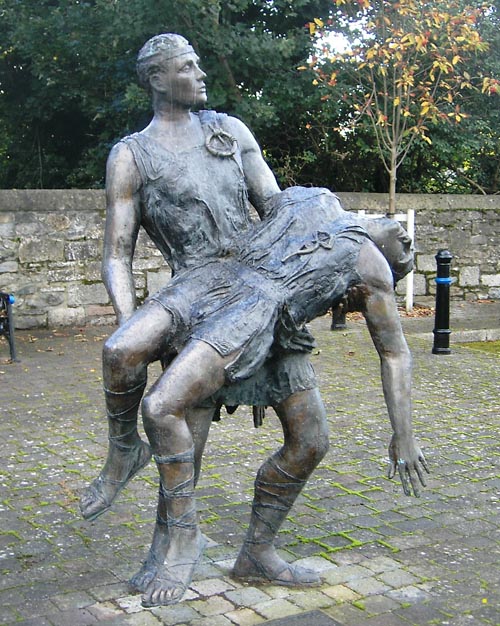Ardee. |
||||
|
Baile Átha Fhirdhia The town of Ardee has an important
place in Irish mythology, The town stands about 12 miles inland from Dundalk it takes its name from Ferdia, Áth Fhirdia (the Ford of Ferdia) Ardee castle dating from the 13th century is said to be the largest tower house in Ireland, it was built by Roger de Pippart, who acquired the area after the Norman invasion. The castle once guarded the northern most extremities of the English Pale. Ardee Castle has recently been renovated possibly as a tourist attraction. During the Edward
Bruce invasion of Ireland the area around Ardee was laid waste, as
were many others in Ireland. Local inhabitants assembled in a Carmelite
friary for protection, according to Lewis's dictionary of Ireland 1837
the friary was reduced to aches. Early in in 1641 The steam age came to Ardee in August 1896 when a five mile spur line linked the town to the main Belfast, Dublin line, Ardee's rail link endured for eighty years closing on 3rd November 1976. The railway carried fertilizer from the local factory which probably accounts for its relative late closure compared to other lined in Ireland. Today much of the line is a designated walkway Ardee today is a vibrant country town playing its part in the booming Celtic Tiger economy, the town would make an excellent base from which to explore south Ulster and Leinster. It is within easy reach of many historic sites and tourist attractions such as Bective Abbey, Newgrange and Trim Castle plus many more. If you are looking for a church with an interesting story attached you might like to have a look at 'The Jumping Church' located about three miles outside the town. Tradition has it that a non Christian was buried in the church, that night the church jumped so as to leave the person outside its sacred ground.
|
||||
|
|



 rebellion
rebellion